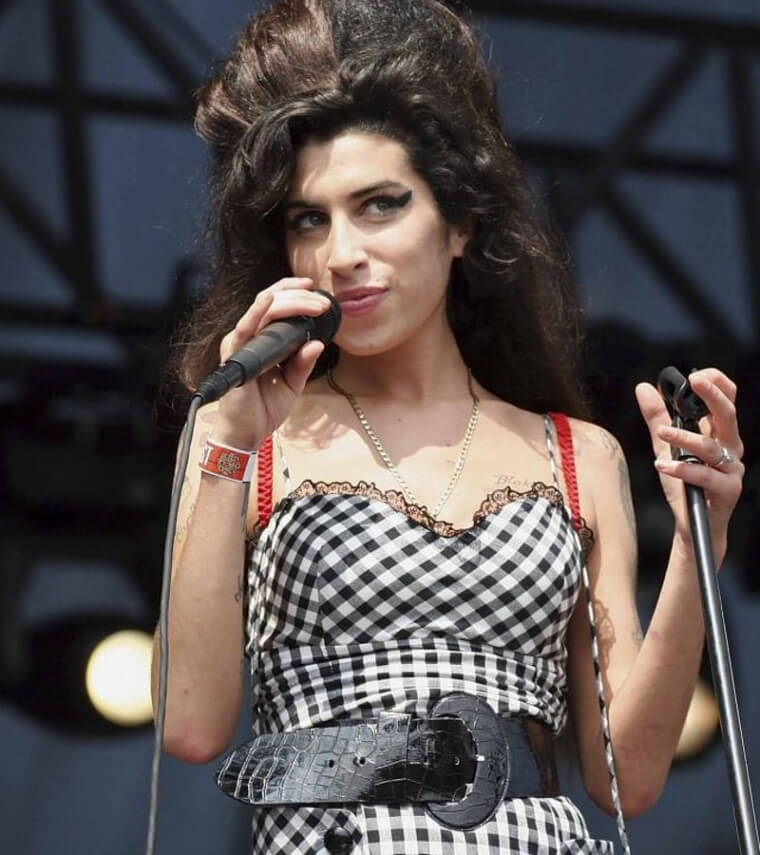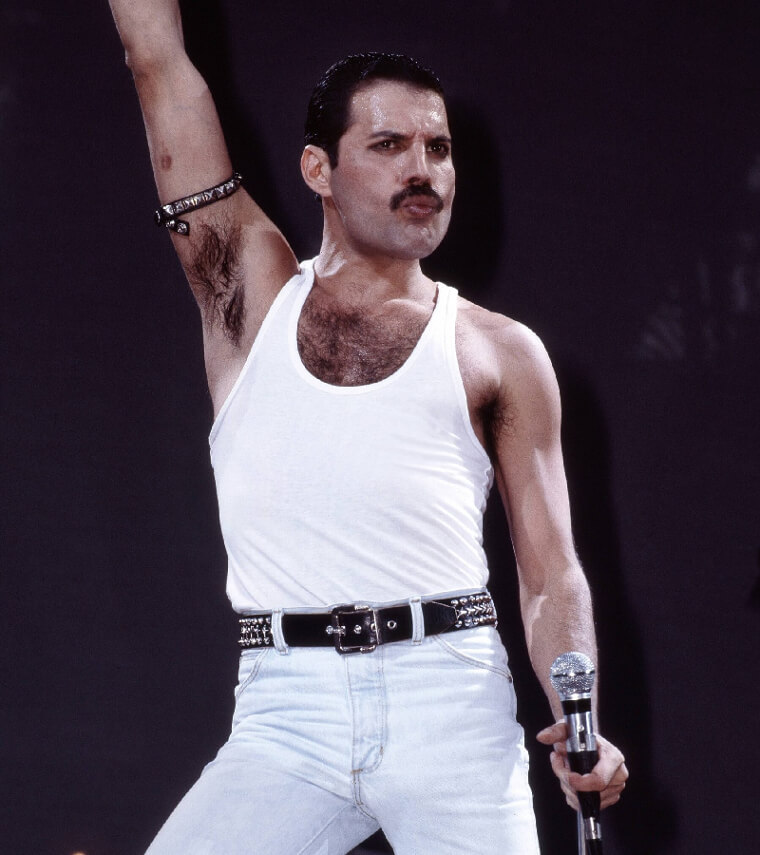Author: Chris
Cheaters Who Got What They Deserved
Cheating must be the worst among the mistakes you could make in a relationship. It will destroy your partner and even affect your family. Today, let’s look at some stories where cheaters got what they deserved. Karma might be late, but she will always come!
A Formidable Alliance
We must have read this story once or twice. It began when two people found out that they were dating the same guy. When this happens, there are two things that they could do. They could fight each other or take it up a notch and get back at their cheating partner.

In this picture, these two girls instantly know what they need to do in this case. It could be the start of a “Pain Olympics” for this guy. If you don’t know what it means, the term refers to a series of old viral videos where a guy went through extreme suffering.
From Begging To Being Aggressive
In this case, perhaps it’s good that they caught their partner cheating earlier. Judging by how they text, we can imagine how toxic their relationship was.

If they don’t break up, there could be much suffering for the other partner. The cheater seems to be very manipulating and short-tempered. We couldn’t see any apology. It’s a good thing that they decide to ignore the threats.
The Ending of Us
After a failed relationship, most people will move on and avoid contact with each other. However, this cheater didn’t get the memo. Moreover, they pick the wrong time to send the message. If you are trying to apologize, make sure to do it when they are not exhausted from a long day.

While we agree that some people deserve a second chance, cheaters like this guy don’t belong to the list. If they manage to cheat on you once, there’s a high chance that they could do it again.
Busted!
We all have a fear of sending a message to the wrong person accidentally. This girl was trying to text her dad, but somehow it reached her boyfriend instead. Her attempt to save the situation makes it even worse.
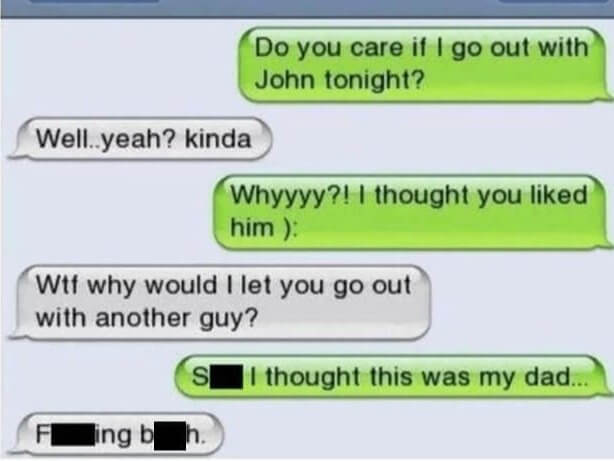
We hope that nobody will suffer the same embarrassing situation as this couple. Moreover, maybe avoid going out with another man when you already have a boyfriend?
Gaming Priorities
Many will say it’s normal when guys pay more attention to videos games than their girlfriends. This guy right here seems to have his priorities straight. He didn’t even care about the breakup at all.

On the other hand, we must salute his partner for dropping a giant bomb before breaking the news. However, if all he cared about was his Xbox, could the relationship live long?
Cool As A Cucumber
Speaking about sending the message to the wrong person, this guy took it up a notch! Jeffery accidentally mixed up two of his girlfriends. Funny enough, this girl quickly acted cool and dug in for more information.

After getting the detail she needed, she revealed that she was still out of town at the time. Big yikes! We could assume that they broke up after the string of messages. Better luck next time, Jeffery!
Like Father, Like Son
Is this a movie? We hope that this type of family doesn’t occur a lot. While the original poster might feel that the situation was hilarious, others might not.

Even when he could outsmart his father, the entire situation is inappropriate. We would suggest both of them get therapy soon to fix that twisted mind.
Epic Celebrities Epic Parenting Fails We Could All Relate to
Most parents will make mistakes related to their children at some point in their life. However, when you are a celebrity with paparazzi surrounding you 247, your silly misstep might end up on the Internet quicker than you think. Today, let’s check out some of famous people’s most epic parenting fails that we have gathered. Read on!
Kate and William
The Duke and Duchess of Cambridge are among the most famous celebrities on the planet, and so do their children. Ever since the birth of Prince George, the world has been keeping track of his development every day.

However, even the most careful parents make mistakes sometimes. In this case, some people have pointed out that Kate and William are using the wrong car seat for their kid. Fortunately, it turned out the chair was upside down. It’s good that they solve this problem before any unwanted accident.
Elizabeth Banks
While Banks might look like a polished lady, she also suffered in the hand of her baby. The actress has shared a story of her visit to a fancy restaurant with her kid. As babies can’t control their urges, they can poop anywhere and anytime.

When her kid exploded with diarrhea, she immediately looked for the bathroom. However, as the place didn’t equip a baby bathroom with changing table, she had to make do by changing on the floor. We couldn’t imagine what the cleaner would think.
Alec Baldwin
When ending his marriage with Kim Bassinger, Alec Baldwin went through a phase of grief and anger. When his daughter missed a call from him, the actor became angry. He ultimately sent a voice mail to her, saying some obscure words.
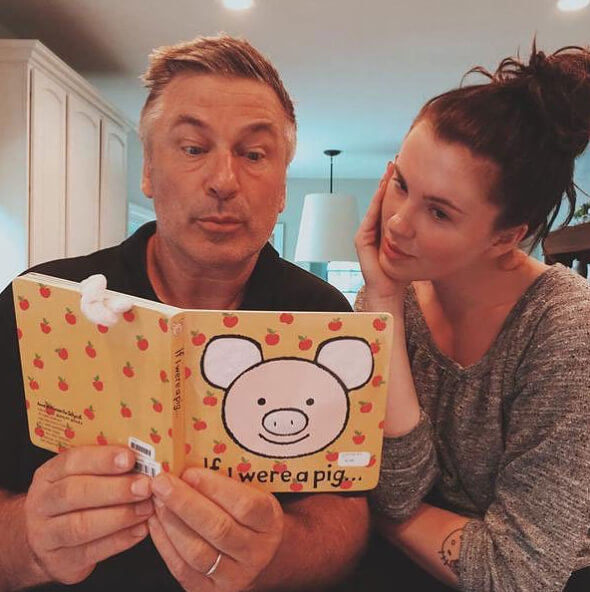
Some of his words were: “Once again I’ve made an a– of myself getting to a phone to make a phone call… I’m going to straighten your a– out…You are a rude, thoughtless little pig.” When the Internet heard about this, all hell broke loose. Luckily, his daughter has forgiven her dad.
Joe Simpson
We have known about Jessica Simpson’s weird relationship with her father since his days as her manager. However, things got heated when she announced her engagement to Nick Lachey. During their wedding, she recalled: “My father acted as if the next day was his execution…

He briefly got it together but cried the whole way down the aisle. It was brutal.” While we don’t know the reason for his action, sabotaging your daughter’s special day is a wrong move. We would understand if Jessica decided not to forgive him.
Farrah Abraham
Farrah Abraham formed a plan when she found out about her daughter having too much hair between her eyes. In detail, the Teen Mon star stated that she showed little Sophia how to deal with it. “I showed her how I waxed mine off, so I (tried) to wax her,”

When her daughter fell asleep, she used tweezers and started to pluck everything out. Do you think this was the right thing to do? We don’t believe a pre-schooler will need to pay attention to such detail.
John Barrymore
As Drew Barrymore’s father was also an actor, she learned about the industry at a young age. However, aside from taking her to auditions, he also brought her to Studio 54 when she was just a child.

It seemed like the party life had gotten into her, and she began to snort up at 13. Major parenting fail! Luckily, she did her time in rehab and managed to get back her everyday life.
Chris Pratt
We have all heard about Chris Pratt and his adorable son. Back in the day, his dad duty also includes pancake-making during weekends. However, he has a bit of parenting fails when trying to make a Donald Duck-shaped pancake for little Jack.

Well, at least he gets some points for trying. He can always give it another try, as he now has two children to please. Chris married Katherine Schwarzenegger in 2019, and they have one daughter Lyla Maria Pratt.
Alicia Silverstone
When feeding her son Bear, Alicia Silverstone used an unorthodox method. She pre-chewed his food then fed it to him in bird style. She explained that this is how people feed their kids for thousands of years, so she’s “very glad” that she did it.
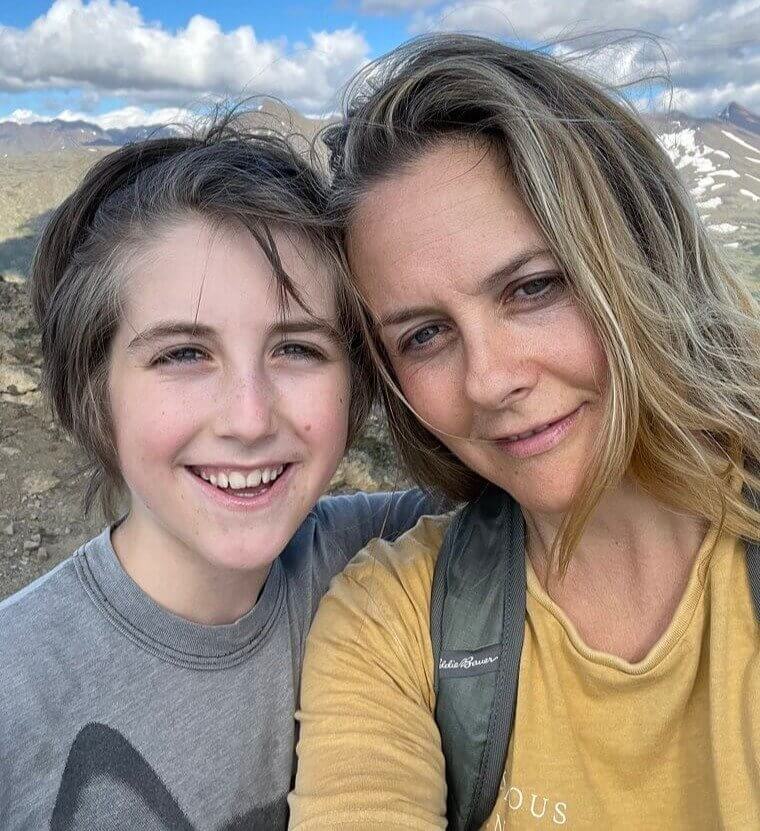
On the other hand, she also received many backlashes for using this method. Would you use the same way to feed your children?
Alicia got mostly negative attention for her baby feeding method at the time. We will admit it’s not harmful, per se. It’s just weird!
Ryan Reynolds
With his witty personality, Ryan Reynolds has many friends in the industry. However, his beloved wife, Blake Lively, doesn’t think so. When he shared a story during her labor, many had mixed reactions.
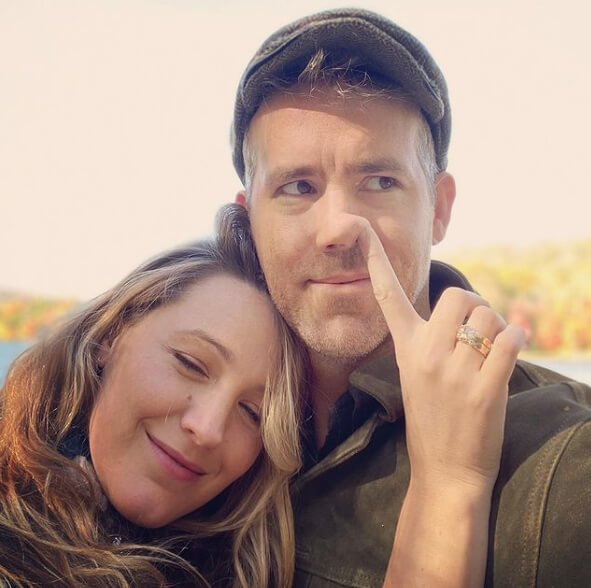
In detail, the actor put on the song Marvin Gaye’s “Let’s Get It On” during the birthing process. Blake was mad. “It was like steak knives coming out of her eyes…Just like ‘Are you f—ing s—ing me right now.”
Famous Co-Stars Who Didn’t Get Along Behind the Cameras
When watching a movie, fans will often expect the main characters to have a good relationship in real life. It could be a fake romance turn real like Angelina Jolie and Brad Pitt, or a friendship pack like the Friends cast. However, this rarely happens. Surprisingly, most famous co-stars in popular series don’t share a relationship like what is shown on screen. Here are some famous duos who didn’t get along when the camera stopped rolling!
1. Vin Diesel and Dwayne Johnson: Fast & Furious
The Fast & Furious series is about supercars, fights, and exciting races. We couldn’t help but admire Dwayne “The Rock” Johnson’s relationship with Vin Diesel in Fast Five. However, the two stars didn’t get along right away.

The Rock has, in fact, started posting cryptic messages on Instagram, talking about Diesel. They refuse to work together in many scenes and leave the crew with a heavy mission of making adjustments throughout the editing process.
2. Bruce Willis and Cybil Shepherd: Moonlighting
Bruce Willis and Cybil Shepherd in Moonlighting are the perfect couple. Over time, they seem to be a perfect couple in a comedy. Nonetheless, that doesn’t mean they get along in real life.
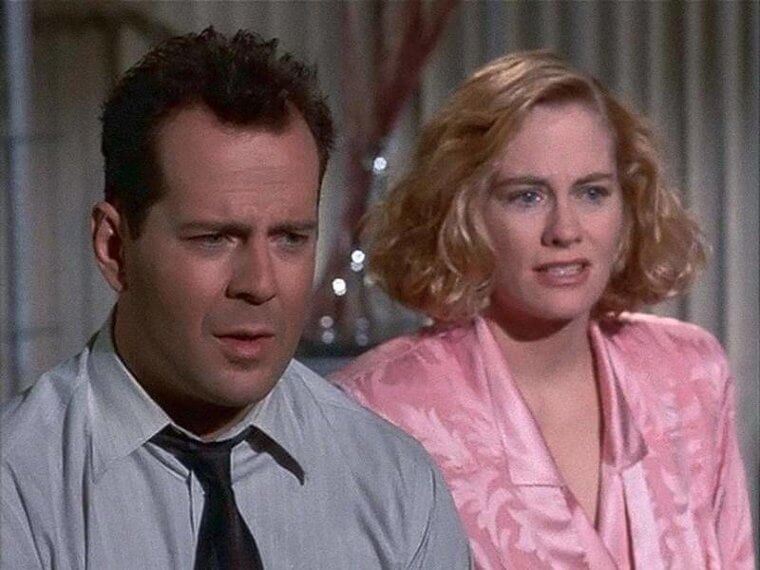
Everyone around secretly knew that the two actors and actresses hated each other. In detail, Shepherd confirmed this in an interview with Entertainment Weekly.
3. William Shatner And Literally Everyone: Star Trek
When William Shatner took on the role of Captain Kirk in Star Trek, he quickly turned the character into one of the biggest television icons. However, this is where everything went wrong. We came across reports that every actor who starred with him in the movie couldn’t stand him.
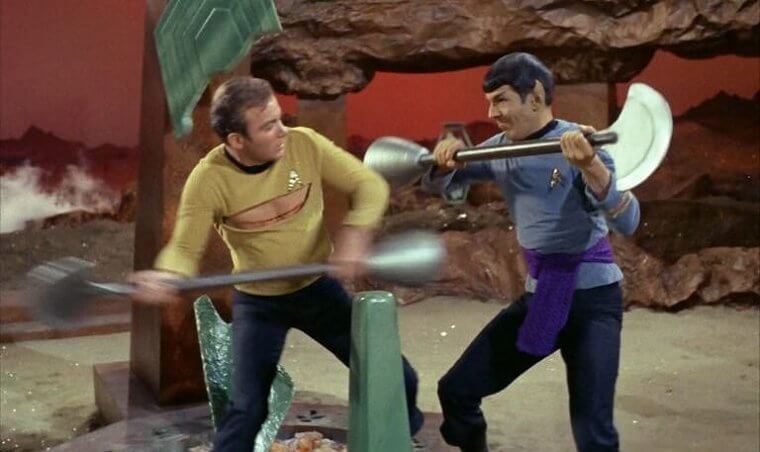
For example, Nichelle Nichols (Uhura) almost quit her job while working with Shatner. After that, Leonard Nimoy was watching Shatner “steal” some lines from Spock so that his character wouldn’t sound “stupid.” And there are many other cases.
4. Tommy Lee Jones and Jim Carrey: Batman Forever
Batman Forever – Tommy Lee Jones – sent one of his biggest insults to Jim Carrey at the end of a scene for the superhero movie. While Carrey played The Riddler while Jones as Two-Face, they didn’t get along like their characters.

Many years later, when they ran into each other again in an LA restaurant, Lee Jones looked at Carrey and said the following words: “I hate you. I really don’t like you. I cannot sanction your gadgets. “
5. Julia Roberts and Steven Spielberg: Hook
When one of the most prominent actresses in history paired up with an iconic director, many have expected them to become the duo of history. What could go wrong with such a perfect combination?
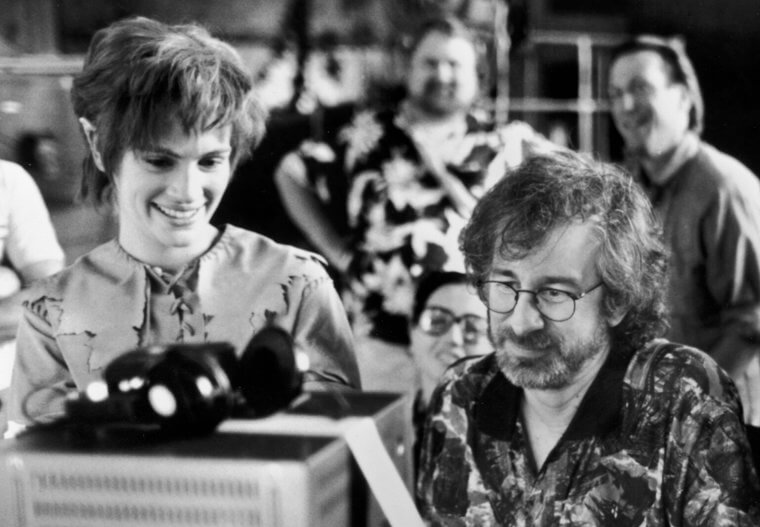
Unfortunately, both Spielberg and Roberts were fighting throughout the filming process. The result? Julia Roberts ended up with a lousy nickname, “Tinkerhell.” After that, they exchanged some words about the co-stars to various news sources, which worsened the situation.
6. Jamie Foxx and LL Cool J: Any Sunday
When the news about these two musicians-turned-actors starring in Any Given Sunday broke out, it was a surprise for many fans. However, they didn’t expect Jamie Foxx and LL Cool J to have a bad relationship.
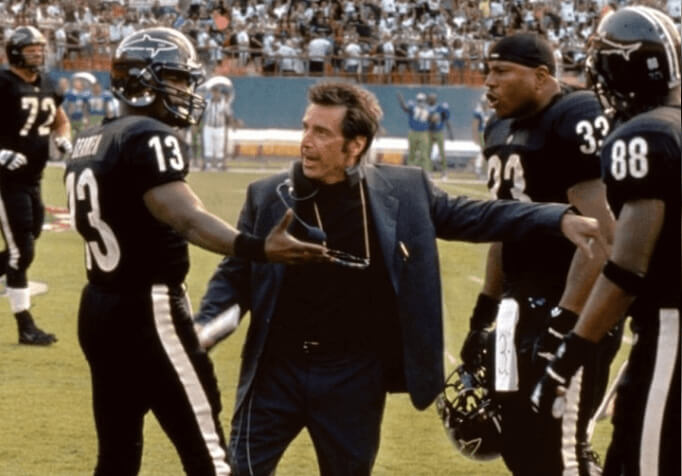
They didn’t hit it off initially, and things only worsened since then. During an argument scene, LL declined when Foxx had specifically asked LL to take things easy. Foxx punched him, and then LL hit back so hard that the singer lost consciousness.
7. Val Kilmer and Tom Sizemore: The Red Planet
Val Kilmer and Tom Sizemore are well-known actors, but both have huge egos. They could act friendly on the Mars filming site, but the two of them could not stand together for most of the time soon after.

After much controversy, Sizemore threw one of his dumbbells at his co-star. They fought soon after. Finally, the crew ended up asking them to refrain from being on set together for the rest of the filming.
8. Marlon Brando and Francis Ford Coppola: The Apocalypse Now
The relationship between Marlon Brando and Francis Ford Coppola is so tense that Apocalypse Now was closed to shutting down. When they accepted to play in the movie, Coppola suffered heart attacks.
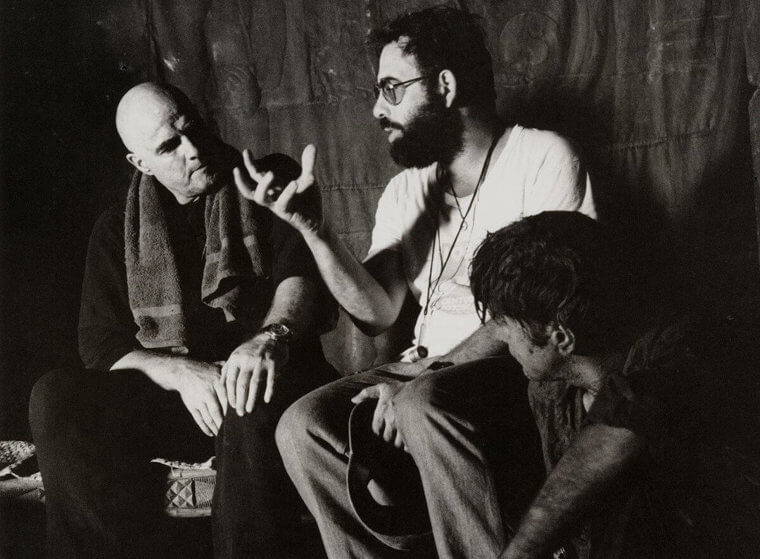
Furthermore, the crew must undergo several funding lapses and severe rainstorm damage. Fortunately, the film eventually became a masterpiece, but the two never worked together again.
9. Will Smith and Janet Hubert: The Fresh Prince of Bel-Air
In the first three seasons of The Fresh Prince of Bel-Air, Janet Hubert played Aunt Viv, Will Smith’s aunt. Suddenly, fans were utterly bewildered when Daphne Maxwell Reid replaced the actress for the character.
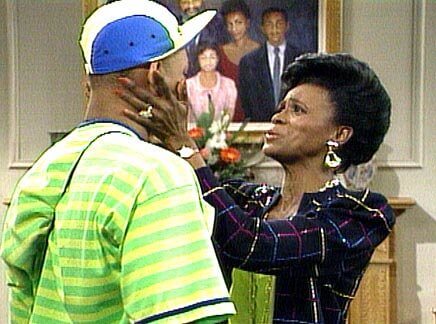
According to Smith, she was a big diva who was trying to take over the show regarding Smith. As a result, he ensured the producers would replace her when she got pregnant.
10. Edward Norton and Tony Kaye: American History X
American History X portrays hatred and violence and isn’t suitable for those with a fainted heart. Along with the hatred on-screen, the relationship between Tony Kaye (director) and main star Edward Norton was also a disaster.
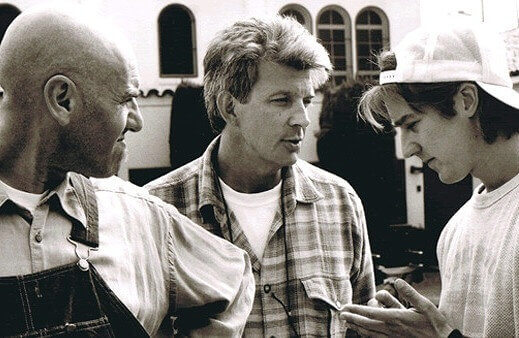
After filming, Kaye refused to claim the film as his own as Norton had done so much editing to the final cut. The director stated that he didn’t want to see his name in the credit but instead used an alias “Humpty Dumpty.”
Real People Who Look Just Like Our Favorite Celebrities
Celebrities have doppelgangers everywhere, from babies to other famous people. After seeing identical stars in Hollywood, how about we check out some ordinary folks that bear a resemblance to the most well-known celebrities? Don’t believe us? Scroll down!
Angelina Jolie doppelganger
One of the most famous actresses that have many doppelgangers is Angelina Jolie. Furthermore, people even underwent plastic surgeons to look like her. However, Wisconsin mom Melissa Baizen didn’t need that. She has already shared many identical features to the starlet.

When being asked about her unexpected fame, she said: “I get the comparison, whether it’s at work, running an errand, or online. While it’s very flattering, it’s also hard for me to believe. I think she is absolutely gorgeous and never thought of myself in that respect.”
Taylor Swift doppelganger
We have come across many Taylor Swift’s lookalikes, but it seems like we finally have a winner. Laura Cadman, a student in the UK, has faced many accusations of copying the famous pop star. Nevertheless, she denies: “I am naturally blonde, reasonably tall, and reasonably slim…

The rest of my ‘Taylor Swift look’ consists of classic red lipstick and eyeliner, which I think is the most flattering makeup on me.” On the other hand, she shares that she’s a big fan of Taylor, and “hope I can meet her someday and tell her how much her music has helped me.”
Scarlett Johansson doppelganger
One of the most popular Scarlett Johansson’s lookalikes is model Ekaterina Shumskaya. Since she was twelve, many people have mistaken her for the Black Widow actress.

When the situation got intense, she had to speak up: “There are people on the internet who confuse me with Scarlett, but I’m not pretending to be her… She stressed: “I want to live my own life, not Scarlett’s.”
Meghan Markle doppelganger
From the picture alone, we could see why people mixed up between these two. Christine Math is a JetBlue flight attendant, and she has received comments on their similarities. After the Suit actress announced her royal engagement, things got more intense.

Could you imaging getting on a plane, and the Duchess of Sussex is standing there saying welcome and handing you a drink? One of the reasons behind their resembling could be the shared heritage. “Meghan and I are both mixed-race – my dad is African American and Italian, and her mom is African American” – she shared.
Beyoncé doppelganger
Detroit native Brittany Williams can’t use Instagram with a problem: every selfie she uploads, there’s a chance it will get flagged down. Why, you asked? She is a Beyoncé lookalike.

“I get approached all the time; whether it be on planes, at the airport or while attending events,” Williams stated. She has also been chased, had pictures taken without my consent, and pranks done without me knowing.
Harry Styles doppelganger
Twitter user Cecilie has one big dream: meeting Harry Styles. While it might take her a while to archive this goal, we have another much quicker way. All she needs is a mirror, and she could be looking at Harry Styles himself.

Even if they are the opposite sex, there’s no denial about their similarities. Cecilie’s joked around online, calling Harry her twin brother.
Kate Middleton doppelganger
After getting married to Prince William, Kate Middleton has appeared constantly on social media. Everything she does is the hot topic of the town. Many people have tried to follow the Duchess of Cambridge’s style and makeup.

This time, we have a winner. This woman has a beautiful haircut, which helps to accentuate her natural features even more. She doesn’t need much makeup due to their similar features.
Leonardo DiCaprio doppelganger
Meet Konrad Annerud, a Scandinavia bartender and the long-lost twin of DiCaprio. While the situation is funny, there is always a downside to everything. Konrad claims: “It can be quite annoying sometimes when people call me Leo instead of my real name.”

He added: “But it’s fun to look like him, I mean, he’s handsome… When I was in Italy, it was very chaotic; people were yelling ‘Leo’ and wanted to take photos with me all the time. He stated: “It was one of the craziest things I’ve ever experienced.”
Rihanna doppelganger
Priscila Beatrice became famous on Brazilian Tik Tok due to her impersonating Rihanna video. At first glance, we have to admit they do look alike.

When Priscila shared more images of her non-makeup state, they even looked like twins. Interestingly, even Riri agrees! The famous singer made a joke and shared that she had seen the viral video.
Bad Home Habit Stories That Could End Your Relationship!
Living together with your partner is not an easy challenge. There’s always something that both of you don’t agree on or problems that you need to deal with. We could learn how to navigate our lives and make them work for most couples. However, others might not be as lucky. Here are some stories where bad home habits lead to the end of a relationship shared by Redditors. Take a look!
Worse Than Chewing.
If you think chewing loudly is bad, user Poprocks_and_cola has another horror habit story that is even worse: “I dated this guy [who] had this really gross habit of always sucking the most disgusting things. It started off small, sucking my toes after I had been for a long walk.” If you think he is the gross, the worse is still behind: “But soon, he was picking coins off the sidewalk and sucking them. I eventually ended [the relationship] when he sucked a dog’s tail.”

Adding to the conversation, WrykerOdetoI shared their tale on the boyfriend: “Went to his apartment for the first time after a few dates. Both of us were broke and between paychecks, so we decided to go to his [place] and watch T.V. Halfway through an episode, I looked over, and his puppy is legitimately suckling on his tongue. I know of people who let their dogs lick them on their mouths, but this was a whole new level for me.”
Smelling weird things is another bad omen.
While we must be patient when dealing with problems, other disturbing habits need to go immediately! A Reddit user has described their ex like this: “My ex had to smell EVERYTHING. Seriously, it was sad. Really weirded me out as well. Like what the [eff] are you smelling that for? ‘I don’t know every time. Never fails.”

If you think this is not a common bad habit, you might rethink after reading ScrangiePangie’s case: “[My ex] liked to smell strange things. Gym socks after running 5 miles… yeah, he’d need to take a big whiff of those… The same goes for sweaty pits of workout shirts, shower towels after many uses, and of course, his own B.O.” Another story in the same sub-threat also said: “My ex had to smell everything. For example, when he adjusted himself down there when he got ear wax out of his ear, and whenever he cleaned his teeth with a toothpick…”
Weird sucking noises.
We didn’t know lollipops could be such a dealbreaker for many people. In this case, RebuildingMyself retold the story of their relationship: “Ex-GF loved lollipops. Nothing wrong with that. Until you are at the computer and want to show her something while she’s sucking on one, [making] disgusting slurpy noises RIGHT IN YOUR [FREAKING] EAR.”

Interestingly, many users have agreed to this problem, adding a few experiences: “This is the worst. I can’t stand mouth/slurpy noises.” I-heart-naps also stated: “I hate mouth noises, whether it’s human or animal. My boyfriend intentionally makes those noises sometimes just to annoy me.”
Public displays of affection aren’t always a good thing.
Public displays of affection (or PDA) have been an ongoing debate for a long time. How much PDA is too much? User fluffywhereareyou’s story might give you an insight. Her boyfriend used to grope her while walking down the street fully. “When I asked him why he felt the need to do that, he told me it was because he wanted to show everyone that I was his. So… bye.”

Another user with the name Vault101’s also responded with her story on an ex who likes to tickle: “I think he thought it was fun and sexy or something, but I told him I didn’t like it, and he just kept doing it, saying, ‘Come on, it’s me.’ I have pretty brutal anxiety, and it really didn’t help.”
Multiple pets are too much.
One or two pets could be an excellent way for couples to bond, but too many could put a strain on your relationship at one point. DoctorDank told the reason why his relationship ended: “One time, the girl I was seeing invited me over for dinner and to stay the night. Now, she lived in a different city than I did, and as I didn’t have a car at the time, this meant arranging transportation from my friend’s [place] and paying for gas money, so no mean feat. As I arrived, I was informed that her new roommate didn’t have a bed, and she would be sharing the king-sized bed with us. ‘No big deal,’ I thought, ‘If we’re gonna get down, we’ll do it on the couch after the roommate [goes] to bed.

WRONG. No sexy times for me. So after dinner, I listened to some of her (bad) poetry and then was informed she was tired and was going to sleep. Oh, and guess who shares the bed? All three cats that lived there, and her Rottweiler. So that’s three people, three cats, and a dog, all in one bed. I don’t think I’ve ever had a worse night of sleep in my life, and I never saw her again.”
Dating mama’s boy could be a challenge.
If you think mama’s boy isn’t real, we have the evidence to show. Mackattack1015 disclosed the story when she was in a relationship with one: “Here’s a good one. My ex was overly attached to his mother to the point where it was weird. He used nicknames for her like ‘sweetheart’ and ‘babe.’ It was downright creepy.”

Mystik-Spiral’s ex was also a typical case of mama’s boy: “My [ex’s] mother hated me so, in what I can only assume was a display of dominance, she waddled down the [stair] steps (she was as round as she was tall) in her pajamas (read: long t-shirt). She then turned around and had him take her bra off her. His excuse? Her nails were too long, and she was too large to reach around and do it herself. I pointed out that she could do what all women do and bring the straps off her shoulders and turn the bra around to unhook it in the front. He did not agree with me.”
Money problem.
We all know that financial disagreements are a huge red flag for couples. BlorfMonger was among the first to share his experience: “[My girlfriend] would turn the A.C. up on high, and then get a space heater and point it at her toes. No…she never paid any power bills.” Needless to say, that relationship ended up completely cold.

Another user also came forward with their anecdote: “I don’t know what’s wrong with some people. It’s suddenly too hot, too cold… If I leave my windows shut unless it’s like 90 or 20 I don’t even need heating. Put on a sweater.”
Famous Celebrities Who Admitted to Having Plastic Surgery
Nowadays, we all have pressure when maintaining our appearance. Furthermore, famous stars even suffer from bad words when they can’t keep their appearance tip top. As a result, they use a lot of ways to fit society’s beauty standards. Makeup, healthy course, and surgical enhancements are the most popular options. While some celebs tried to deny going under the knife, others have bravely admitted to it. Here are some celebrities who acknowledged their plastic surgery!
Victoria Beckham
When talking about the most stylish celebs, Victoria Beckham’s name always pops up in the ranking. Asides from her iconic career in music, Mrs.Beckham kicked off her second profession as a fashion designer.

Over the year, she has denied many plastic surgery rumors. However, the famous designer did admit to the press that she had worked done. “I should probably say, don’t mess with your boobs. A sign of insecurity. Just celebrate what you’ve got.”
Amanda Bynes
Bynes has been staying away from the limelight for a while. The American actress isn’t active on social media, which led to her successfully avoiding any questions about receiving any surgical enhancements.

However, asides from her poorly done prison-style face tattoos, she did hint about having a cosmetic procedure done once. In 2013, Amanda Bynes posted a vague tweet: “I love plastic surgery.”
Jamie Lee Curtis
If you have been a fan of horror movies back in the days, it’s hard not to see Jamie Lee Curtis. Her strong background came from the support of her A-list parents, Janet Leigh and Tony Curtis.

As a result, Curtis always felt the pressure to keep up her perfect appearance. Nevertheless, she didn’t shy away from sharing details about her plastic surgery. “I’ve had a little lipo(suction), I’ve had a little Botox. And you know what? None of it works. None of it.”
Jennifer Aniston
Did you ever notice that Rachel has quite a different nose from her younger years? Similar to her character, Jennifer Aniston disclosed that she had surgery before to fix a deviated septum.

Other than that, she swore the rest is natural. Funny enough, when Rachel denied it was a cosmetic procedure, nobody believed her. What do you think about this claim?
Ariel Winter
After appearing as Alex Dunphy on Modern Family sitcom, Ariel Winter made the headlines for two different reasons. At first, it was due to many photos of her curvy body and bold choice of clothing. After that, she dropped the bomb when admitting to having breast reduction surgery.

The actress shared that it wasn’t because of her figure. The procedure was done to relieve her from constant back pain. “It started to hurt so bad that I couldn’t take the pain, My neck was hurting so bad, and I had some problems with my spine.”
Ashley Tisdale
Back in the day, High School Musical star Ashley Tisdale has taken to social media to talk about her surgery. In detail, the actress shared that she underwent a breast enhancement procedure.

As for a reason, Tisdale shared that she “constantly felt my body was less than” and thought that the change could “make me feel more whole and more secure about myself.” However, after a few health issues, she eventually removed the implants.
Lady Gaga
We have seen various rumors about Lady Gaga’s plastic surgery. So far, the singer has denied going under the knife for any procedure.

Nonetheless, she did admit to using fillers and even got addicted to it once. She said: “I went through a phase when I was smoking pot when I was really obsessed with getting facial injections.
Tara Reid
At one point, Tara Reid was one of the hottest names in Hollywood. However, the cruel industry kept moving on, and she eventually lost the spotlight. Reid blamed that her plastic surgery problem stood between her and superstardom in many interviews.

The American Pie actress suffered from a bad boob job and liposuction. “I had a hernia, this huge bump next to my belly button. As a result, I couldn’t wear a bikini. I lost a lot of work,” – she said.
Chrissy Teigen
Aside from the acting world, Chrissy Teigen was once the undisputed Queen of Twitter. She has been open to talking about many acute problems, including her plastic surgery history.

“I had an armpit sucked out, which was one of the best things,” she disclosed at an event. “I felt more confident. It was the dumbest, stupidest thing I’ve ever done. The dumbest, but I like it, whatever. I have no regrets, honestly,” she added.
Top 10 Most Expensive Dog Breeds In The World
For many people, the best feeling in the world is to come home and cuddle with our beloved pets. Moreover, we tend to pick dogs and cats over other types of animal friends, don’t we? However, dog ownership could come with a hefty price tag. Asides from food, toys, or health care, some dogs could be incredibly pricey. Today, why don’t we check out some of the most expensive dog breeds in the world?
Dogue de Bordeaux: $3,500
If anyone wants to own a Dogue de Bordeaux, they will need to pay more than $3500 per one. This dog breed comes with a unique look and is incredibly cute. Overall, they can weigh up to 100 pounds when fully grown!

However, Dogue de Bordeaux has a shorter life span than other dog breeds. They can only live from five to eight years. Nevertheless, they will still enjoy a wonderful life with love from their owners. Do you think you will pay more than $3,500 for this puppy?
Giant Schnauzer: $3,000
While the Giant Schnauzer isn’t as popular as the mini version, they still come with a hefty price of $3,000 or more.

These beautiful dog breeds are massive, and one can grow over two feet tall. At their peak, they weigh over 90 pounds. You can easily train them for outdoor activities.
Samoyed: $3,000
This adorable dog breed originally came from Siberia, which explained their thick white coats. As a result, they could live in a colder and harsh environment.

Aside from that, their adorable smiles make them the perfect friends for any animal lover. Most Samoyed needs lots of exercise, so make sure to take them out for walks as many as possible.
English Bulldog: $3,250
English Bulldog must be one of the most popular dog breeds globally. They have a unique look, and the sad-looking face makes our hearts melt every time we look at one.

While their average cost starts around $3,250, some could reach a $4,000 price tag in different areas. However, this breed is also famous for having many health problems, leading to an enormous expense.
Treeing Walker Coonhound: $3,300
At first glance, we couldn’t believe a dog breed with such a name existed! Even with the weird name, they do not have any features or habits related to ‘tree.’ Additionally, these dogs don’t walk; they are the super-fast running dog types.

Aside from that, Treeing Walker Coonhound is very friendly. Your puppy will be outgoing and doesn’t require high maintenance like other dog breeds. You will even have to pay up to $6,000 to own this dog in some cases.
Alaskan Malamute: $4,000
Aside from the cute Samoyed, the Alaskan Malamute also comes with a thick luscious coat. As a result, this type of dog needs to have regular grooming sessions.

As one of the most handsome dog breeds, they could cost up to $4,000. Moreover, their medical bills will rack up another $7,700 overall over the years.
Black Russian Terrier: $5,000
You will fall in love with a Black Russian Terrier if you are a small-dog lover. This breed comes with a shiny coat and has a lovable nature.

Their starting price tag is over $5,000. Besides, be prepared to pay up to $6,000 for their medical bills throughout their life span.
Akita: $6,500
Akita dogs always come with a hefty price tag due to their gorgeous look and power. Moreover, they will make you a loyal life companion and protect you in many situations.

Before owning an Akita, you might need to learn how to train them. Besides, they could undergo training sessions in the center before joining you at your home.
Great Dane: $7,100
As they are a strong and handsome breed, it’s easy to see why Great Dane has been one of the most expensive dogs globally. Will you pay more than $7,100 for this furry friend?

American Bully: $10,000
The last expensive dog type on our list is the American Bully. However, many places won’t accept this dog as a recognized breed.

They are related to the American pit bull terrier. Moreover, these dogs are as solid and sturdy as their relatives. As a result, their price could easily exceed the $10,000 mark!
Celebrities Who Do the Opposite of What They Preach
As we follow many celebrities, some of them do have a problematic approach of “Do as I say, not as I do.” At one point, they could be preaching about an important issue. However, they could do a 180-degree turn and make the same mistake soon after. Don’t believe us? Here are some famous cases of celebrities who go against their words!
Billie Eilish
Let’s start the list with one of the famous Gen-Z singers, Billie Eilish. Aside from her music career, Billie has advocated for animal rights and has been a long-term vegan. She used her platform to speak out on animal abuse and the mink fur trade. PETA even awarded her with the “Best Voice for Animals” award.

Considering her history, we have to laugh. The famous pop star has a fair share of using luxury brands like Gucci and Fendi, which use leather and real fur in their designs. On the other hand, she did star in one of her music videos with feathered wings from real birds.
Harry and Meghan
The famous couple broke the internet when they departed from the Royal Family. After that, they announced their first non-profit charitable foundation Archewell. Their main goal is to promote sustainable and eco-friendly tourism. Funny enough, their decision was quick to meet many criticisms.

They took four private jet flights when the pair went on an 11-day trip to celebrate Meghan’s 38th birthday. Imagine the damage they have caused to the environment? Besides, Meghan also used a private jet to fly to New York to celebrate her baby shower. When asked about the situation, Harry left the press with a simple sentence: “No one’s perfect.”
Natalie Portman
Aside from playing Thor’s love interest in the famous Marvel series, Natalie Portman is a recognized actress with many awards. Moreover, Portman claimed to be an activist for many causes since young, from animal rights to women’s issues. In 2020, she stood up and delivered a speech, raising the questions on the Oscars snubbed for women directors.

Such a powerful statement received much support and cheers from the community. Nevertheless, the situation changed when someone pointed out that the actress’s production company didn’t follow the same direction. So far, Handsomecharlie Films only has one female director: Natalie Portman. So, where’s the rest?
Kylie Jenner
As one of the most famous beauty businesswomen and Instagram stars, Kylie Jenner has a different thought about her popularity. As she’s been in the spotlight since the age of nine, the famous socialite admitted she “doesn’t know what it’s like to live a normal life.” Moreover, Kyle mentioned that sometimes she dreamed of a life where she wasn’t famous.

Judging by the infamous history of her family, hardly anyone could believe her words. Furthermore, what she did for her daughter Stormi Webster was even the opposite. Stormi made her debut on social media weeks after her birthday. After that, Kylie announced the launch of her “brand” when she was just three years old.
Jennifer Lopez
In 2002, Jennifer Lopez boldly claimed that she hadn’t changed her Bronx native despite her superstardom. The singer even released a specific song for this statement: Jenny from the Block. However, she shot the whole music video in Los Angeles, a weird choice.

Things got even worse when she tried to capitalize on her Bronx past in a commercial in 2011. Lopez was driving around in the video, saying: “Here, this is my world.” Unsurprisingly, they also filmed it L.A, while using a body double for all the Bronx scenes.
Scarlett Johansson
Many spotted James Franco wearing the Time’s Up pin at the Golden Globes awards. After that, he received many criticisms. After that, Scarlett Johansson has spoken about his case at a women’s march, asking how he could stand by Time’s Up, then turn around and “privately preying on people who have no power.” She demanded her pin back.

However, she quickly met her short end when Dylan Farrow accused Woody Allen, her adoptive father, of assaulting her. However, she claimed that it was “all guesswork.” Before the accusation, we must note that she starred in three of his movies.
Kim Kardashian
Among the Kardashians, Kourtney was in a long-term relationship with Scott Disick. The pair never marries but has three children. Nevertheless, Kim has some not very nice words about her sister: “You’re not married! How could you do this?” Funny enough, she announced her first pregnancy with Kanye West in 2012.

At that time, they were not married yet. Kim was still married to Kris Humphries. Luckily, she managed to admit her wrong words: “I’ve said some things that I completely am, like, a hypocrite about now.
Justin Bieber
In 2014, the famous pop star was boarding the Los Angeles International Airport when he came across some protestors about Air France shipping monkeys to laboratories. Bieber quickly announced his support to the group and denounced Air France.

However, he was caught trying to get his pet Mally, a capuchin monkey, into Germany the previous year. As he couldn’t provide any paperwork, the authority confiscated Mally. Despite having the chance to reunite with his friend with the proper documentation, Bieber never returned.
Lady Gaga
When she was working on the Chromatica album, a part of her song was leaked all over social media. Lady Gaga quickly responded by tweeting, “Can y’all stop.” Funny enough, she included a stock image with the tweet, showing a girl listening to a music player while wearing a ski mask.

After many people pointed out that the Shutterstock watermark is still there on the picture, hinting that she didn’t pay for the image either. Shutterstock’s Twitter account came to the conversation with some witty remark: “We like artists to be paid for their work too. Here’s a link to the photographer’s work where you can license these images.”
Identical Stars That Will Blow Your Mind!
If you think celebrities are one in a million, these identical stars will change your mind. We have seen many cases of famous doppelgängers on the internet or even some kids that look like these celebrities. Today, let’s check out some megastars that we have probably mistaken once or twice. Don’t believe us? Scroll down!
Zoey Saldana and Jada Pinkett Smith
Are you sure they are not twin separated at birth? There’s no report of a common relative between the two until now. Nevertheless, many have mistaken Zoey Saldana and Jada Pinkett Smith in various situations.

Despite having a seven-year age gap, they shared many similar facial features. When both actresses appeared at the same event, people could have difficulty telling who.
Margot Robbie And Jaime Pressly
You’ll be surprised to know people have mistaken Margot Robbie for many names in Hollywood. Surprisingly, her most famous look-a-like person is Jaime Pressly. This is a funny situation, as their accents are the most important details to tell them apart.

Since her rise to stardom from The Wolf of Wall Street, many have pointed out that she has a similar feature and facial structure to Pressly. With gorgeous square jawlines, bright eyes, blonde hair, it’s hard to believe that they are 13 years apart.
Amy Adams And Isla Fisher
If we are talking about identical stars, Amy Adams and Isla Fisher will always appear on the list. Even celebrities often mistook the two US and Australian starlets at many events.

At the Vanity Fair Oscars after-party, Lady Gaga mixed up the two. Luckily, Fisher didn’t correct her to avoid any unwanted headlines. Adams and ger usually laugh about it and have shared many funny stories throughout their career.
Henry Cavill And Matt Bomer
If one Superman isn’t enough, then two will probably work. Both Henry Cavill and Matt Bomer starred in different movie franchises. However, we bet that many have thought they are the same person at one point.

Do it quickly if any studio wants to case Bomer for any superhero movie! On the other hand, many could perhaps look forward to Cavill’s appearance in the next Magic Mike movie? Who’s going to be the first in line for the premiere?!
Kristen Stewart and Alicia Silverstone
How have we not realized how similar Alicia Silverstone is to Kristen Stewart until now? While the Twilight lead and Clueless star are 13 years apart in age, they could pose as sisters through these images.

They have matching noses and eye shapes, judging by this photo. Even though it would be hard to see both of them on the same screen, we’re hoping for the day that they could meet at an event.
Bryce Dallas Howard and Jessica Chastain
In this case, even the parents confused Bryce Dallas Howard and Jessica Chastain for each other. Howard’s father, filmmaker Ron Howard, mistook Chastain for his daughter at an event red carpet.

Sharing similar facial features, it’s not hard to see why people mistake them as twins. Both actresses discovered their similarities when they starred in The Help movie together.
Selena Gomez and Rachel Bilson
As Selena Gomez and Rachel Bilson never appear in one photo together, few people think of them as identical stars. They reached their stardom at different times and didn’t cross paths in their career.

Regardless, once we put these pictures side-by-side, their similarities are more evident than ever. While their face shapes are different, Bilson and Gomez spot similar noses and eye colors.
Katy Perry And Zooey Deschanel
While most identical stars above didn’t know about their famous doppelgängers, Katy Perry did meet Zooey Deschanel before. The pair even exchanged words about their similarities. Katy confessed that she used to pretend as Deschanel to get into clubs back in the day.

Moreover, they even did an Instagram live together at one point, with Perry sharing: “When I came to L.A., I was pretty much a nobody, and you were just getting so huge at that time … At that moment, I was so complimented on looking like you.” Meanwhile, Deschanel admitted that she didn’t mind once the two met.
Brad Pitt and Benicio Del Toro
Do you think Brad Pitt and Benicio Del Toro look similar in this case? The Puerto Rican actor could pose as a tired version of Brad easily.

They both have rugged beards and strong facial structures, making them look like brothers or distant relatives.
Heath Ledger and Joseph Gordon-Levitt
When Heath Ledger and Joseph Gordon-Levitt co-starred in 10 Things I Hate About You, we did think of them as twins. Additionally, they both act in the same Batman universe at one point. While Levitt played Robin, Ledger was the Joker.

Millie Bobby Brown And Natalie Portman
Despite the large age gap, we have to agree that Millie Bobby Brown could easily pose as Portman’s younger version. When the V for Vendetta actress hosted the SNL show, she did act as Brown’s character Eleven from Stranger Things.

While many have doubted that the two were related, like Emma Roberts and Julia Roberts, they did not share any common relatives in real life.
Ed Sheeran and Rupert Grint
Do you think that Ed Sheeran and Rupert Grint’s red hair makes people confused about them at first glance? For a long time, the Harry Potter star has been mistaken as Sheeran many times, and vice versa.

They both have sly smirks and British accents to charm the ladies. Moreover, Grint even appeared in one of Ed Sheeran’s music videos. Can you guess which one it was?
Celebrities and their Famous Last Words!
Whatever aspects we consider, all celebrities are always on another level. Their legacy makes them the icon even when they pass away. As a result, such a thing as their last words is also something many people remember. Today, we have some of the most memorable and famous last words from celebrities.
Amy Winehouse
The notorious rock star could have lived a long life. The “27 Club” singer struggled with drinking and substance abuse for her whole life. From the outside, she’s the big star with a unique style in fashion and music. However, her life was no fairytale.
Her famous last words came from a voicemail sent to her doctor: “I don’t want to die.”
Paul Walker
When Paul Walker’s death reached the news, many were devastated. The popular actor has been acting more than 15 years before hitting it big with The Fast and the Furious. In 2013, he suddenly passed away due to a tragic car accident at 40.
Before getting into the car from a typhoon charity event, his last words were, “Hey, let’s go for a drive.”The information was shared by an engineer who was also present on the same occasion.
Whitney Houston
Even though she passed away, her legacy lives on forever. Who doesn’t come back and listen to I Will Always Love You once in a while? However, she suffered from various abuse issues behind the scene. Most of the problems came from her husband Bobby Brown and their abusive relationship.
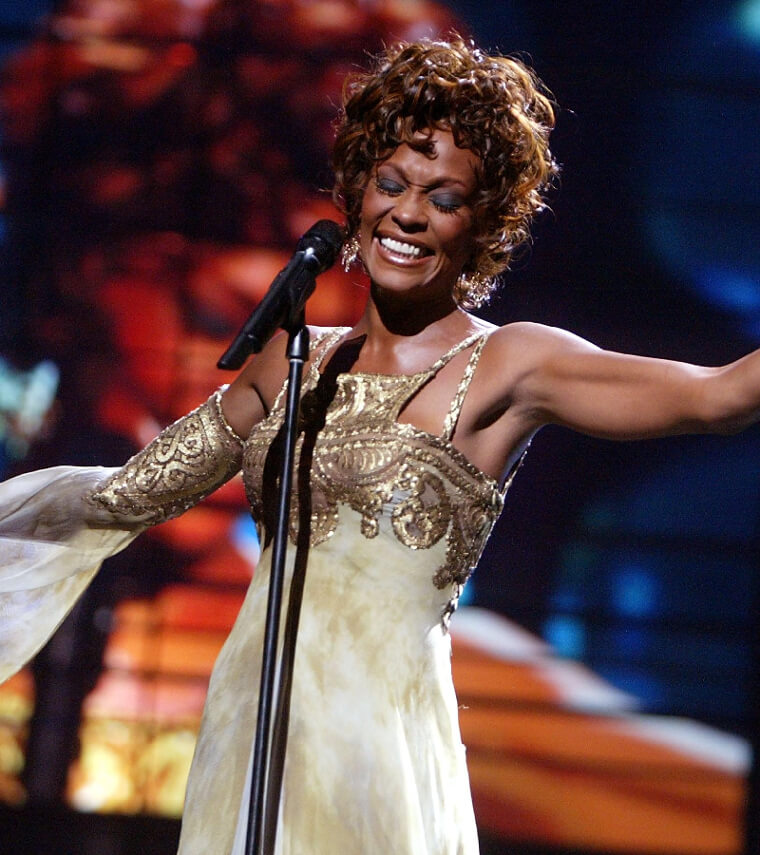
People found her drowned in the bathtub in a Beverly Hilton hotel room at 48. The police listed heart disease and illegal substances as the reasons behind her death. Her last words were with a friend, saying, “I’m gonna go see Jesus. I want to see Jesus.” Is this foreshadowing?
Robin Williams
Many movies fans were shocked to learn about the passing of Robin Williams. The actor had brought joy and laughter to our lives through many roles. However, even someone that looks happy could suffer from depression. Robin Williams ended his own life at the age of 63.
During the evening of that day, he had told these last words to his beloved wife Susan: “Good night, my love.”
Heath Ledger
The actor won the Best Supporting Actor Oscar for his fantastic performance as Joke in The Dark Knight. Moreover, he was also the first actor in a comic-book-related movie to win such an award. Many didn’t know that Ledger had been struggling with insomnia for many years.

He also suffered from a respiratory illness that made him heavily rely on medication in his final days. His sister shared that his last words were spoken to her “It’ll be fine, I just need to get some sleep.”
David Bowie
David Bowie was the one who constantly reinvented himself and stood out with trailblazing musical styles. As one of the most influential musicians of the 20th century, his decades-long career has affected many people long after his passing.
Gary Oldman – his longtime friend – has shared his last words in one of their final conversation. In detail, Bowie has shared with him that music “has been my doorway of perception and the house that I live in.”
Freddie Mercury
The story of Freddie Mercury’s rise to superstardom must be one of a kind! Born in the Zanzibar archipelago in the Indian Ocean, Mercury starred as the frontman of Queen. He suffered from the immunodeficiency virus and succumbed to the disease in 1991.
His partner Jim Hutton shared his last words: “Pee-pee.” He needed support in going to the bathroom as Mercury was too frail.
Princess Diana
While she was living under the headline for 16 years, everything about Princess Diana remained a hot topic until this day. From her marriage to Prince Charles, the divorce and tragic passing in 1997.
The “People’s Princess” car crashed one day in a Paris tunnel when running from the paparazzi. A fireman at the scene has retold the story of her last words when being pulled from the wreckage: “My God, what happened?”
Celebrities With Unique Body Parts
Many of us will think of celebrities as those who are flawless and perfect from head to toe. You couldn’t be further from the truth. While they are rocking the red carpet with luxury outfits, the truth is they might be hiding some secret underneath. We are talking about scars, severed fingers, or even a third nipple or extra toes. Don’t believe us? Here is a quick list of your favorite celebrities with unique body parts you might not know!
Megan Fox with a Club Thumb
Megan Fox hit it big when she starred in many famous movies like Transformer or Teenage Mutant Ninja Turtles. Many magazines have voted for her as one of the most beautiful women globally. As a result, it’s hard to imagine such a gorgeous woman could have any flaw.

However, Megan Fox has shared that she has one club thumb. She even joked around and said that her mother consuming tuna when she was pregnant was why such a feature.
Vince Vaughn and his Partially Severed Thumb
Famous for his roles in movies Dodgeball: A True Underdog Story, Wedding Crashers, and The Break-Up, Vince Vaughn has become a household name.

If you have paid closer attention to his appearance, you might have noticed something off about him. He got a partially severed thumb on one of his hands. This resulted from a nasty car accident when he was a teenager.
Jennifer Garner and her Overlapping Pinky Toe
After starring in Alias, Jennifer Garner became a famous star in the movie industry. She has also acted in many products such as 13 Going on 30, Ghosts of Girlfriends Past, and Juno.

Interestingly, she has an overlapping pinky toe condition, mainly known as brachymetatarsia. As a result, the actress often wears flats and boots to hide her feet. Once in a while, she will switch to sandals.
Kim Kardashian and her Six Toes
Even the ever-beautiful Kim Kardashian got some secrets. Kim recently addressed the rumors about her sixth toe on social media: “Everyone thinks that I have six toes, and it’s really wild,”

The KKW Beauty mogul counted five toes on her left foot, dismissing the gossip. However, she mentioned a weird part on her foot that stands out whenever she wears a shoe.
Matthew Perry With A Missing Part of His Middle Finger
If you’re a fan of the famous Friends series, Chandler was out at one point as having a third nipple. While the actor doesn’t have this extra nubbin, he shared another missing part. In detail, fans have pointed out that Matthew Perry’s middle finger is missing the tip.

According to Perry, he lost it when he was three in a nursery school accident.
Stephen Colbert and his Big Ears
Best known for his The Colbert Report and The Late Show with Stephen Colbert show, he knows how to make us laugh with his gigs. Besides his jokes, there is another funny thing about the famous host that many people have pointed out: his ear.
His right ear sticks out at an unusual angle. However, there is a story behind this. He explained that he was deaf in one ear at a young age and had surgery to fix it. “I had this weird tumor as a kid,” Colbert shared, “and they scooped it out with a melon baller.”

And that’s because he’s been deaf in one ear since he was a child when the surgery that was supposed to fix his perforated eardrum caused damage to his inner ear. “I had this weird tumor as a kid,” Colbert told The New Yorker, “and they scooped it out with a melon baller.”
Angelina Jolie and her Knobbly Knees
One of Hollywood’s leading stars, Angelina Jolie, has won many prestigious awards like an Oscar and three Golden Globes. She has starred in many big movies like Maleficent, Tomb Raider, and Mr&Mrs Smith.

Moreover, she was also named the most beautiful woman by various magazines. Nevertheless, she still has one unique feature: knobbly knees. We usually see them protruded whenever she wears a split dress. Additionally, her thin body makes them more recognizable.
Celebs Caught Without Any Makeup
Celebs Caught Without Any Makeup
The image of a celebrity is super important. As paparazzi are everywhere and can catch them off guard at any moment, they must always appear at their best.
However, a recent trend has stormed social networks these days, where celebrities choose to use the hashtags #NoMakeUp and #WokeUpLikeThis to post photos of themselves with unpolished looks. SO what does this mean? They want to prove that even as a celebrity, they are real people, just like everyone else. Here are some of the famous stars without their usual glam on!
Adele
Let’s come to the first artist on our list of celebs caught without any makeup! As one of the greatest recording names in the music industry in recent history, Adele possesses the voice of a diva. However, if you follow Adele’s Instagram, you’ll see her posting pictures without makeup. After getting off the stage, she can be caught with no heavy blush, foundation, or eyeliner. Despite her bare face, to us, she is still beautiful.

Tyra Banks
The second person we want to introduce you is Tyra Banks. The popular model relies on her authentic image to become famous compared to many other well-known artists. She is the founder and host of America’s Next Top Model. Moreover, Tyra Banks was the first African-American model to appear on the cover of Sports Illustrated. Additionally, she is also one of the most fabulous supermodels globally. Banks chose to post a makeup-free photo on social media to encourage people to live their lives bravely.

Eva Longoria
Eva Longoria has transformed into many characters in various film series and television shows. Notably, she is best known through the ABC series Desperate Housewives as Gabrielle Solis. Critics praised her to the fullest. On the other side, she was a member of the Golden Globe and a Screen Actors Guild Award.

Her striking looks are associated with class and wealth, but Longoria looks classy and impressive even without makeup!
Emilia Clarke
Many people know Emilia Clarke through her role as Daenerys Targaryen in Game of Thrones. However, many fans have failed to recognize her without the character’s signature white hair in some events. She looks much different with her gorgeous brown hair and bare face in real life. That’s right, she still looks great!

Cindy Crawford
Cindy Crawford has appeared on the covers of prominent magazines such as Vogue, W, People, Harper’s Bazaar, Elle, Cosmopolitan, and Allure in the 80s and 90s. Besides, she also started in many fashion campaigns for big brands such as Versace, Calvin Klein, Gap, and Revlon lovers.

Notably, she is one of the most fabulous supermodels in her career history. Even with her bare face on, she still looks so charming!
Madonna
Who doesn’t know the pop queen Madonna? Though she’s tried countless looks, stages, and transformations, with a point of continuity that ties them all together, she always manages to surprise and inspire us. Now even with a bare face, Madonna still looks excellent.

Without her signature red lipstick, she still looks so unique and beautiful!
Cara Delevingne
Born in 1992, Cara Delevingne has racked up an impressive career run up until now. Is there anything she couldn’t do from being a top model to singer, writer, and now actress? Nothing can stop this talented woman’s dedication to her career.

Thanks to her unique looks, she started her modeling career. Notably, she refuses to trim her prominent eyebrows, which eventually becomes a unique look on her. Moreover, her bare face is so pretty!
Beverley Mitchell
Beverley Mitchell rose to fame in the 1990s when she took on the role of Lucy Camden-Kinkirk on 7th Heaven. In 2007, she released her self-titled country album.

She had the bold idea of taking a photo of her bare face to share on social media the moments a celebrity mom looked like before she decided to take a nap. She looks great!
Kim Kardashian
The following person in our list of celebs caught without any makeup is Kim Kardashian. Even though she owns KKW cosmetics brand, Kim doesn’t think everyone should wear makeup all the time. She shared her makeup-free photo on social media many times. Her bare face might look strange at first, but she is still gorgeous, as always, with a natural look.

Whatever look you choose, makeup or not, you are the queen of your life!
Katy Perry
Let’s talk about the last people on our list of the celebs caught without any makeup: the ever-popular Katy Perry. Back in 2001, she left her mark on the world of bubblegum pop and moved on to dominate the music industry with hits after hits.

For nearly 20 years, Perry’s sparkling personality has fueled the glitter industry. She is a true pop star. Her ex-husband, Russell Brand, once accidentally posted a candid photo he took of her in their home. Fans got a relatively rare glimpse of her when she was at her most vulnerable. However, she still looks pretty, even if it’s a random photo. Russell Brand was an ex, but now Perry is engaged to Orlando Bloom!

